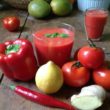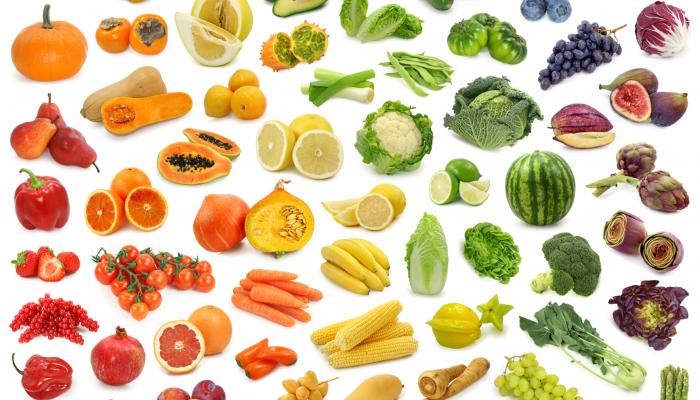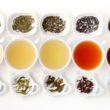Mother Nature’s produce doesn’t indicate what benefits to be gained when you eat them. Vegetable and fruit stands simply put labels on their wares without providing much information unlike medications where you can easily determine which one will work for your headache, colds, and even body pain through their product label. This makes buying groceries a bit difficult especially when you want to eat right and healthy. How then can you decide what’s good for you or not? Why, by color, of course.
The pigmentation of the fruits and vegetables is the one that will give you a hint on what benefits you can gain when you eat certain colors. If you want to know which foods to buy the next time you shop, use this article as your cheat to buying foods that are healthy and right for you.
1. Red. Red is often used in most restaurants because it stimulates one’s appetite. In the case of food, red signifies lycopene which is known to reduce one’s risk of acquiring certain types of cancer such as prostate cancer. Fruits and vegetables that come in this hue also have folate and vitamin C including flavonoids which are known to reduce inflammation. Increasing your intake of tomatoes, guavas, watermelon, red bell pepper, and pink grapefruit. You can also go for Cranberries though its red pigmentation isn’t due to lycopene but anthocyanins. This fruit contains tannins that stop bacteria from attaching on your cells’ walls.
2. Green. You can keep your eyes healthy by eating plenty of greens that contain high amounts of lutein. Lutein helps prevent macular degeneration as well as cataracts. What’s even better is that other cruciferous veggies such as Brussels sprouts, broccoli, and kale can also help eliminate toxins in the body that can cause cancer. Adding greens to your groceries means that you’re also increasing your intake of vitamin K, potassium, omega-3 fatty acids, folic acid, and carotenoids. Those with high blood pressure should include green leafy veggies in their diet as they can help reduce blood pressure.
3. Yellow/Orange. Carrots, pumpkin, apricots, sweet potatoes, cantaloupes, and mangoes are fruits and vegetables with yellow or orange pigmentation. When you see these colors, they are a good indication that the produce is loaded with beta-carotene, which, aside from improving one’s eye health, can also help boost the immune system. Swiss chard and spinach are also packed with beta-carotene but because of high amounts of chlorophyll, the green color became more pronounced.
4. White. You’re probably avoiding all the white stuff when buying groceries such as refined sugar and bread because they’re not good for your health, but do make an exception when it comes to vegetables. White vegetables such as onions, scallions, garlic, leeks, and cauliflower contain allicins which are known for their ability to fight cancer, boost cardiovascular health, and reduce your risk of acquiring bacterial and viral infections.
5. Blue/Purple. For those who want to maintain their youthful glow, go for the darker colors. Produce that come in darker shades such as deep purple or blue are high in anthocyanins which is a type of antioxidant that boost circulation, enhance your brain’s health, not to mention halt any signs of aging. These shades in vegetables and fruits are also useful in combating cancer as including any type of heart problem because they prevent any clots from forming. Blueberries, plums, blackberries, red grapes, and red cabbage are worth including in your diet if you want to look younger beyond your years.
Although many health enthusiasts suggest consuming foods that are within a specific color, it is still better to go for a diverse range of colors when it comes to your fruits and vegetables to get the most benefits. It is still unclear on how much vegetable or fruit of a specific color you should consume to get a certain amount of antioxidants or flavonoids. This is why, going on a diet with as much as color as possible is highly recommended as opposed to limiting your food choices to certain colors. After all, some phytochemicals are colorless so you may be missing out on healthier benefits by skipping other colors.
Now that you know the health benefits you can get from certain hues, you can be as creative as you want to be in the kitchen. Go for meals where you can incorporate the colors mentioned above to have a healthy and delicious meal.













